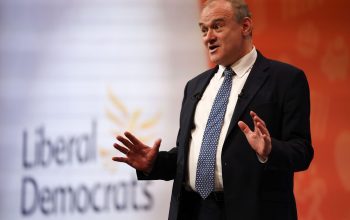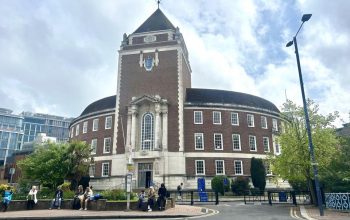Despite Kingston having one of the lowest percentages of child poverty in England, figures are set to rise due to “weak” government strategy, a national charity has warned.
A recent report has shown that millions of children across Britain are being given no choice but to live in destitute conditions, surviving on a poor diet funded by an unemployed or underpaid family who are crippled by debt.
These poverty-stricken children are restricted from the day they are born and earlier this month the Government published its Child Poverty Strategy outlining measures that aim to lower child poverty figures to 10 per cent by 2020– but are current changes to the welfare system going to hinder efforts?
The Government’s strategy, which was published under the requirements of the Child Poverty Act 2010, has been dismissed as “weak” by the campaign End Child Poverty, who argue that it could even exacerbate current problems.
The charity accused the Government of putting “the cart before the horse,” with key requirements being “a long way below the standard required.”
Speaking on behalf of the campaign, spokesman Imran Hussain, said: “Ministers can’t really call this a strategy as it doesn’t have the comprehensive measures needed across government to impact on children’s lives.”
A ‘child poverty map’ released by the Campaign to End Child Poverty in January revealed that there are still extensive pockets of poverty across the UK- including in certain wards of Surrey.
In Kingston and Surbiton 16 per cent of children live below the poverty line.
In the worst affected ward of Norbiton, 30 per cent of the children are living in poverty, whilst in the neighbouring affluent ward of Tutor only 6 per cent of children are affected.
With such a divergence of figures across the borough, the report warned that even if it is “unspoken and unseen,” poverty will be “present in your community to some degree.”
End Child Poverty spokesman, Tim Nichols, said that the campaign has had a great deal of support for being a “local indicator”- meaning that those in local governments “will be encouraged to produce a way of tackling the poverty in their area.”
Under the Child Poverty Act, Local Authorities were required to produce their own individual policy– the One Kingston Child Poverty Strategy aims to take at least 1000 children out of poverty by 2014, reducing figures to 12 per cent or lower.
Across the country boroughs in London, the world’s sixth richest city, dominated the highest percentages of children living in poverty, with Tower Hamlets and Islington having the worst figures of 52 per cent and 43 per cent respectively.
Barnardo’s chief executive Anne Marie Carrie said that behind these statistics “sit the most vulnerable children in society, whose life chances risk being compromised by our nation’s failure to tackle child poverty effectively.”
End Child Poverty’s report, which classed children as in poverty if their family’s income fell below 60 per cent of the average income of £25,000, revealed that 2.4 million children, or one in five (20.9 per cent), across the country are living in poverty.
With so many families struggling to keep their children clothed, fed and warm, Executive Director of the campaign, Alison Garnham, said the map “paints a stark picture of a socially segregated Britain where the life chances of millions of children are damaged by poverty and inequality.”
With the cap to housing benefit reducing payments to £250 a week for one-bedroom property and £400 for a home with four or more bedrooms, there are fears more families will be left struggling.
Because of the recent tax and benefit changes, the End Child Poverty report argues that a greater burden is being placed on society’s poor, which Ms Garnham said: “Will prove both an economic and a social disaster.”
The recession and continuing economic slowdown has impacted child poverty dramatically with more children living in families where nobody works, as well as pay and benefits failing to keep up with inflation.
The report showed that even families that work are afflicted, with 59 per cent of poverty stricken children living in a household where at least one adult works, demonstrating that certain wages are insufficient.
The Budget proposes that 50,000 children may be taken out of poverty in 2011 to 2013, but states that the estimates exclude many factors and are “on the edge of statistical significance”.
Responding to the Budget, End Child Poverty spokesman, Mr Nichols, said that the Governments new financial plan “does nothing to guarantee the progress needed on the Government’s child poverty targets.”
He said that it would be impossible to build a stable economy whilst poverty and inequality still exist, adding: “It is meaningless to talk about creating conditions for growth if policies are causing family budgets to shrink and children’s life chances to dwindle.
“Ending child poverty is integral to getting the economy back on track.”
The Institute for Fiscal Studies has warned that unless the Government “takes a more progressive approach to tackling the deficit,” by 2015 child poverty will rise by approximately 400,000 children and couples with two children will be £1,250 worse off annually.
A Government Spokesperson said that they are committed to tackling the “root causes of poverty,” taking “practical steps to help families” including cutting fuel duty, freezing Council Tax and cutting income tax for millions.
For more details visit endchildpoverty.org.uk




